Chapter 19
Questions
- 361. The image shows:
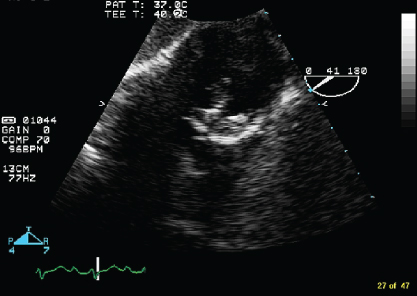
- A. Normal native tricuspid valve
- B. Normal bioprosthetic valve
- C. Vegetation on a bioprosthetic valve
- D. Avulsion of the tricuspid valve
- 362. This 31-year-old woman with no other medical history had two episodes of transient ischemic cerebral attacks, the first one after a long duration of air travel and the second one during straining in the restroom. The most likely cause of this patient’s attacks is:
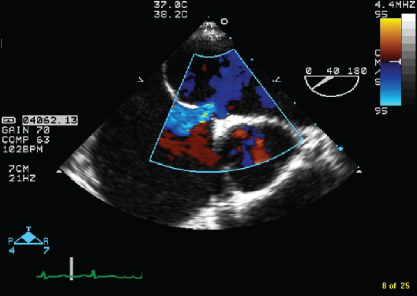
- A. Paradoxical embolism
- B. Vagally mediated atrial fibrillation
- C. Left atrial thrombus
- D. None of the above
- B. Vagally mediated atrial fibrillation
- 363. This 35-year-old patient with AIDS and bicuspid aortic valve has Staphylococcus bacteremia. The parasternal long axis color flow image is suggestive of:
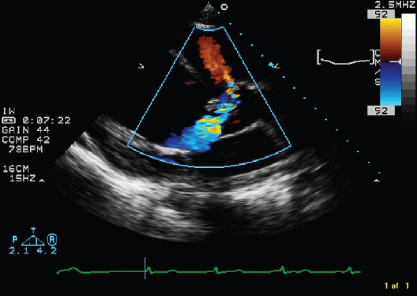
- A. Right coronary artery flow
- B. Pulmonary vegetation
- C. Fistulous communication between aorta and right ventricle (RV)
- D. None of the above
- 364. This patient’s bilateral Staphylococcus lung abscesses are likely due to:
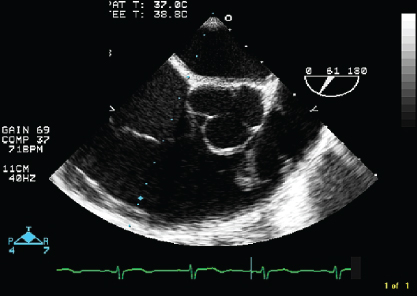
- A. Tricuspid valve endocarditis
- B. Pulmonary valve endocarditis
- C. Catheter-related infection of superior vena cava and right atrium (RA)
- D. None of the above
- 365. The structure indicated by the arrow is:
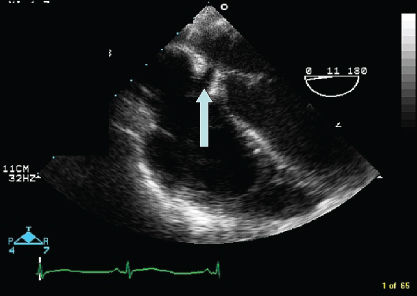
- A. Coronary sinus
- B. Inferior vena cava
- C. Atrial septal defect
- D. None of the above
- 366. This patient’s stroke is likely due to:
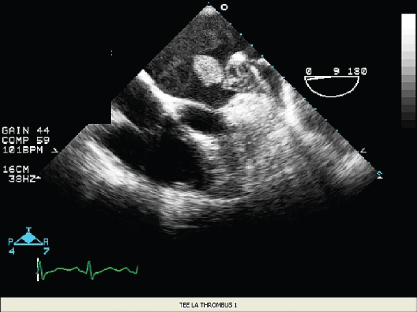
- A. Left atrial thrombus
- B. Left atrial myxoma
- C. Mitral valve endocarditis
- D. Patent foramen ovale (PFO)
- 367. The structure indicated by the arrow is:
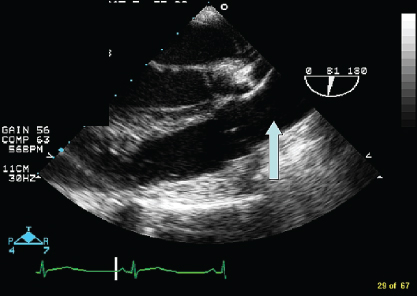
- A. Main pulmonary artery (PA)
- B. Ascending aorta
- C. Descending aorta
- D. None of the above
- 368. This patient with a prosthetic tricuspid valve has evidence of:
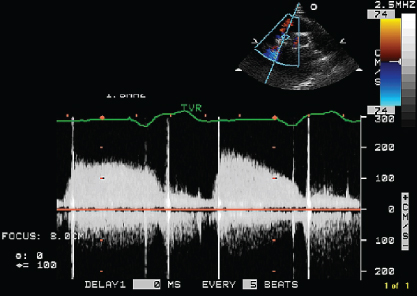
- A. Normal function
- B. Stenosis
- C. Regurgitation
- D. Endocarditis
- 369. The mass in the left atrium in this patient is most likely:
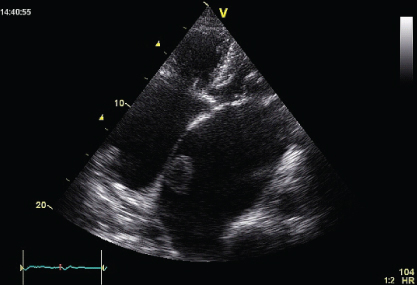
- A. Thrombus
- B. Myxoma
- C. Metastatic lung carcinoma
- D. Lipomatous septum
- 370. The short axis view of the heart is indicative of:
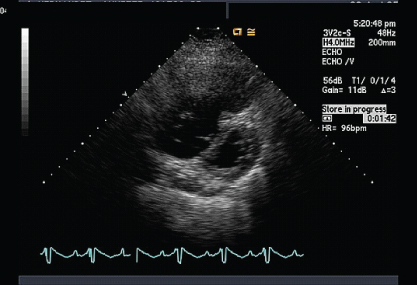
- A. Severe pulmonary hypertension
- B. Severe tricuspid regurgitation (TR) with normal PA pressure
- C. RV infarct
- D. RV dysplasia
- 371. The surgical procedure that this patient underwent is most likely to be:
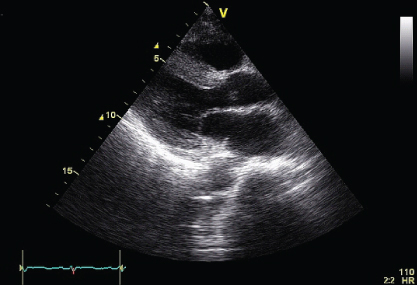
- A. Orthotropic heart transplantation
- B. Mitral valve repair with annuloplasty
- C. Maze procedure
- D. Septal myectomy for hypertrophic obstructive cardiomyopathy
- 372. This TR signal is from a patient with moderate TR. The most likely mechanism of TR is:
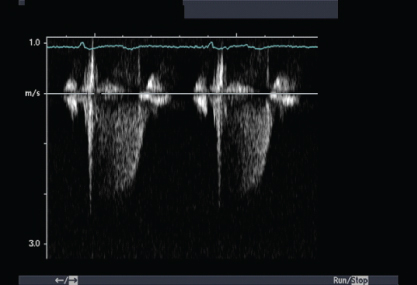
- A. Pulmonary hypertension with annular dilatation
- B. Flail tricuspid valve
- C. Tricuspid valve prolapse
- D. Cannot make a mechanistic diagnosis
- 373. This image of the aortic arch from the suprasternal view is suggestive of:
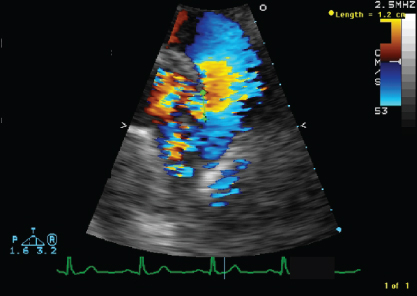
- A. Patent ductus arteriosus (PDA)
- B. Coarctation of the aorta
- C. Severe aortic regurgitation
- D. Aortic pseudoaneurysm
- 374. A 42-year-old woman presented with complaints of shortness of breath. An echocardiogram was obtained. Dynamic images showed an LV ejection fraction of 50% with abnormal appearance of the apex. Filling pressures were high, valves were normal. She had normal electrocardiogram, comprehensive and complete blood count except an eosinophil count of 20%. The appearance of the LV apex is suggestive of:
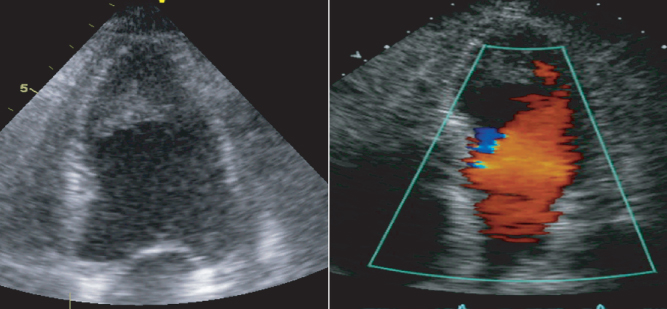
- A. LV apical thrombus
- B. LV noncompaction
- C. Apical hypertrophic cardiomyopathy
- D. Endomyocardial fibrosis
- 375. The TR velocity profile shown here is suggestive of:
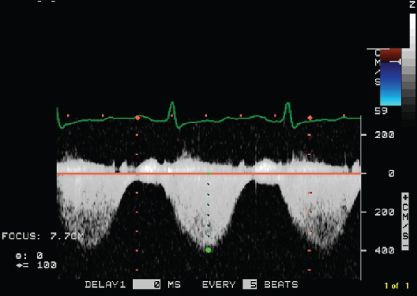
- A. Normal PA pressure
- B. Mild pulmonary hypertension
- C. Severe pulmonary hypertension with good RV function
- D. Severe pulmonary hypertension with poor RV function
- 376. The amount of tricuspid regurgitation in this patient is:
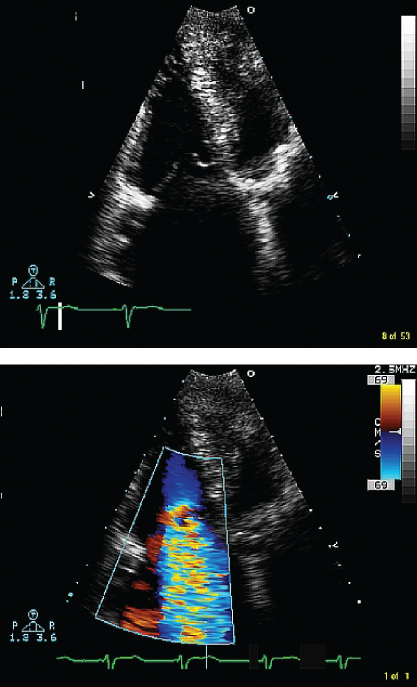
- A. Mild
- B. Moderate
- C. Severe
- D. Cannot quantify
- 377. The patient in question 376 is likely to have:
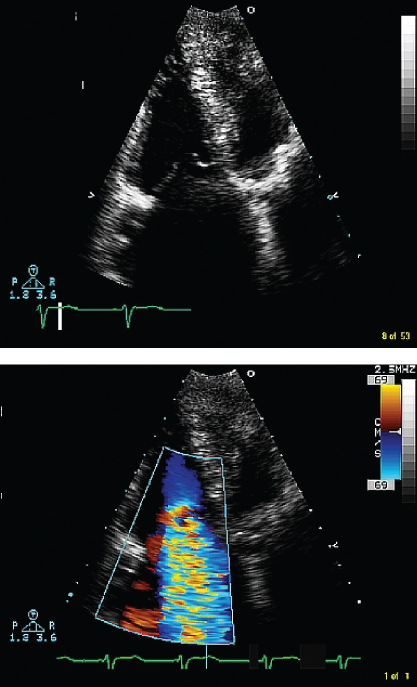
- A. Normal PA pressure
- B. Mild pulmonary hypertension
- C. Moderate or severe pulmonary hypertension
- 378. The type of surgical procedure performed on this patient’s mitral valve is likely to be:
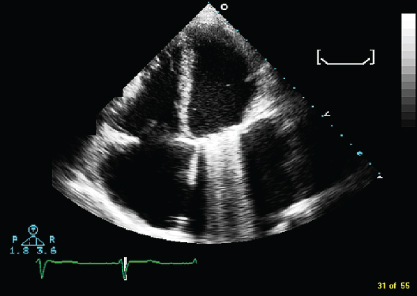
- A. Mitral annuloplasty
- B. Alfieri procedure
- C. Replacement with a bioprosthetic valve
- D. Replacement with a mechanical valve
- B. Alfieri procedure

Stay updated, free articles. Join our Telegram channel
- A. Normal native tricuspid valve

Full access? Get Clinical Tree


